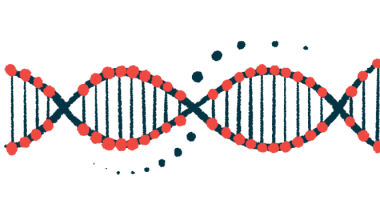Smoothened Agonist May Normalize Defects in Brain Cells With FA

Astrocytes, a type of support cell in the brain, showed metabolic defects and unusual pro-inflammatory activity that likely contributes to neuronal dysfunction in a cell model of Friedreich’s ataxia (FA), according to a new study.
Results also indicate that treatment with a molecule called smoothened agonist (SAG) can normalize these defects in FA astrocytes.
The study, “The smoothened agonist SAG reduces mitochondrial dysfunction and neurotoxicity of frataxin-deficient astrocytes,” was published in the Journal of Neuroinflammation.
FA is caused by mutations in the gene that provides instructions for making frataxin, a protein that is crucial for the function of mitochondria, the so-called “powerhouse of the cell.” The disease affects the nerves and muscles, which require energy to do their jobs.
Most research on the nervous system — in FA, and in general — has historically focused mainly on neurons, the large, wirelike cells that send electrical signals. However, neurons are not the only cell in the nervous system; a number of other cell types, collectively termed glial cells, also play important roles in the nervous system.
Astrocytes are a type of glial cell that get their name from their starlike shape. These cells play crucial roles in supporting neuronal function and responding to stress. Of particular note, in response to certain stimuli, astrocytes can undergo a process called “A1 reactivity,” where their activity shifts to an inflammatory state (for example, releasing pro-inflammatory signaling molecules).
Here, scientists in Spain conducted a series of experiments using human astrocyte genetically engineered to reduce frataxin production.
A battery of analyses showed that the frataxin-deficient astrocytes exhibited mitochondrial defects as expected, which was linked with metabolic abnormalities and increased cell death (apoptosis). The lack of frataxin also induced A1 reactivity in the astrocytes, and these A1 astrocytes showed marked defects in wound-healing assays.
A signaling pathway called sonic hedgehog (SHH) — named after the blue video-game character — is important for neuron–astrocyte communication by helping keep astrocytes in a nonreactive state. In subsequent experiments, the researchers treated frataxin-deficient astrocytes with SAG, a compound known to activate the SHH pathway.
Results showed that SAG treatment improved survival and normalized mitochondrial function in cells lacking frataxin. The treatment also substantially reduced the A1 reactivity of frataxin-deficient astrocytes, which was accompanied by improvements in wound-healing dynamics.
“Globally, these results suggest that FXN [frataxin] deficiency polarizes HAs [human astrocytes] towards a pro-inflammatory reactivity profile, and that chronic treatment with SAG reduced the inflammatory response observed in these cells,” the researchers concluded.
The inflammatory signaling molecules released by A1 astrocytes may be damaging to neurons, which generally require an environment free of inflammation to function correctly. In subsequent experiments, the researchers grew astrocytes in cellular media, with or without frataxin knockdown and/or SAG treatment. Then, the media that the astrocytes had been grown in — referred to as astrocyte-conditioned media, or ACM — was used to treat neurons.
While ACM from wild-type astrocytes had no obvious effect on neuronal health, ACM from astrocytes engineered to lack frataxin caused a significant decrease in neuron viability and also reduced the formation of synapses (connections between individual neurons). However, ACM from frataxin-depleted astrocytes that had been treated with SAG did not result in neuronal death or have any apparent effect on synapse formation.
“Our data suggest that FXN-deficient astrocytes become reactive and release one or more soluble factors to the media that impair neuronal viability … and synapse formation, nonetheless, all these effects can be pharmacologically blocked by activating the SHH pathway with SAG,” the scientists concluded.
Overall, these results highlight that astrocytes play an active role in disease processes in FA and offer initial clues for potential treatment strategies.
“Future research on the mechanisms by which SHH activators like SAG are regulating neuron-glia cross talk in experimental models of the disease will shed light on the possibility to modulate this pathway to target and limit/arrest neurodegeneration not only in [FA], but also in other neurodegenerative diseases,” the researchers wrote.







